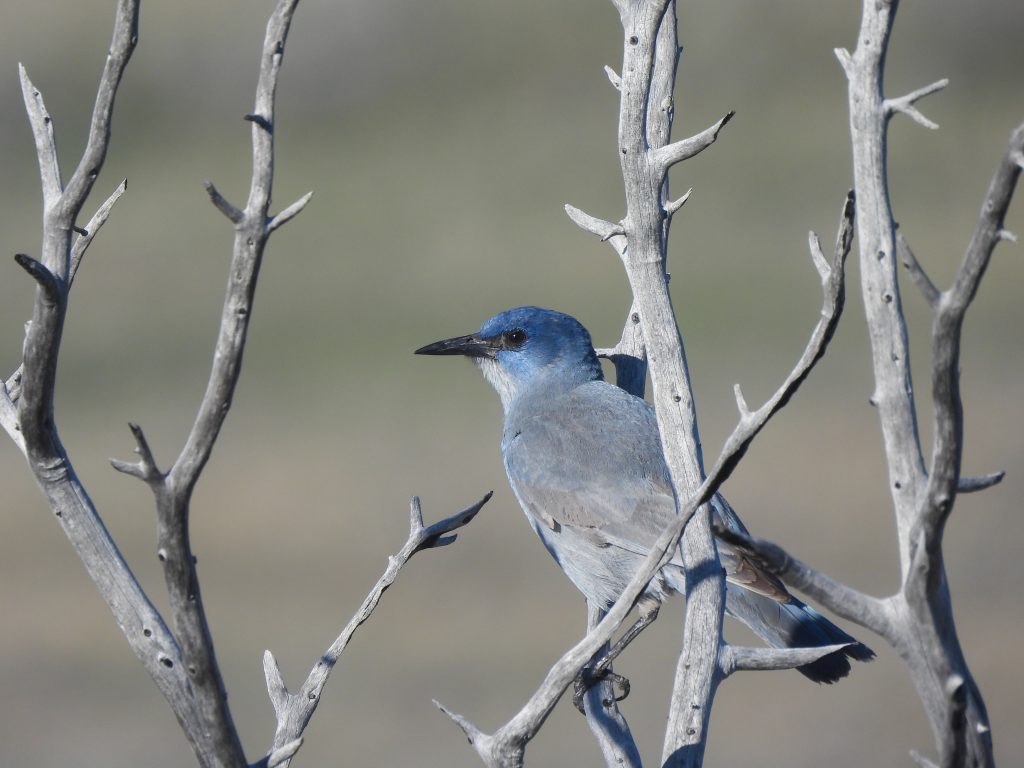What do they do Without their Namesake Tree? Mapping Suitable Habitat for Idaho’s Pinyon Jays in a Pinyon-Sparse State

- Jay Carlisle, Boise State University, jaycarlisle@boisestate.edu
Principal Investigator
The Pinyon Jay (Gymnorhinus cyanocephalus) is a social species of jay that breeds colonially, gathering in large groups at specific breeding sites, and primarily in pinyon and juniper woodlands across western North America. A rapidly declining population trend, combined with concerns over climate sensitivity and habitat degradation, led to Pinyon Jays being petitioned for consideration under the U.S. Endangered Species Act in 2022. Management of Pinyon Jays and their habitats is complicated by several factors, most notably a (1) lack of knowledge regarding habitat needs in many parts of their range (i.e., can we identify the most important habitat areas?) and (2) potential conflicts with management for Greater Sage-Grouse and other sagebrush-obligate wildlife species that includes extensive removal of pinyon-juniper woodlands with a goal of increasing the quality and quantity of sagebrush-steppe habitats. Importantly, most breeding Pinyon Jays in Idaho occur in areas lacking pinyon pine, so understanding what resources Pinyon Jays rely on where pinyon pine is lacking is an important goal. Likewise, decreased vigor of pinyon pine forests — documented in response to decreased precipitation during cooler months and increased maximum temperature during warmer months — could potentially affect breeding colonies in Idaho; thus, understanding the health of pinyon pine in its limited Idaho distribution will be important to our understanding of Pinyon Jay habitat needs in Idaho.
Ultimately, we need a more refined understanding of Pinyon Jay habitat needs, which would both provide critical information for federal and state land and wildlife management agencies and support strategic conifer management that balances benefits for sage-grouse while minimizing risks to Pinyon Jays. Jay and his research team will utilize NW CASC fellowship funding to build and refine a habitat suitability model for Pinyon Jays in Idaho, helping ensure that their intensive survey and monitoring efforts from 2023-26 will yield management-relevant information for the state, Tribal, and federal agencies charged with wildlife habitat management. They will also produce an accompanying web tool to share maps of habitat suitability and habitat characteristics associated with known breeding colonies; inform land managers of potentially suitable habitats that may be vulnerable to conifer removal treatments and climate change; and identify priority areas for future survey efforts.
